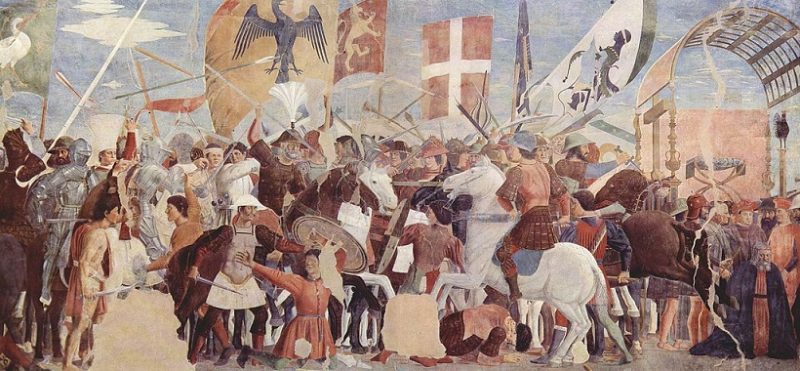At the beginning of the 6th century, the Roman and Persian Empires were in the midst of a major conflict. The Second War between Rome and Persia is also known as the Iberian war, during which the two empires fought over the right to control the lands of Iberia in eastern Georgia.
After ten years of war, Rome has advanced beyond the acceptable limits in on the frontiers of Persia and claimed lands as their own, even building a stronghold near the Persian city of Dara. Anastasius, who was the current Roman emperor had little to no acknowledgment for the peace treaty after the previous war and paid no attention to diplomatic convoy sent to him from Sassanid emperor Kavadh I, who was not pleased with this.
After Anastasius’ death in 518, his successor to the throne Justin adopted the aggressive policy of the previous emperor. Justin was originally the Captain of the Guard but managed to rise above his military rank into an emperor of the mighty Eastern Roman Empire and a founder of the Justinian Dynasty.
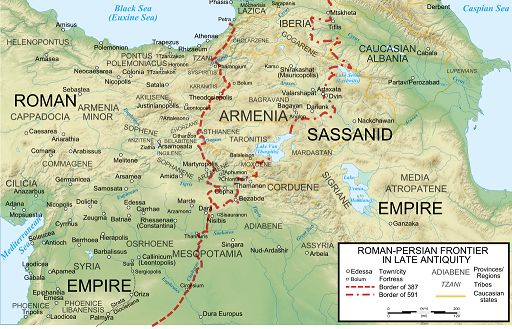
Upon his succession to the seat of power, Justin decided to make an alliance against Persia, uniting Rome with a king of the Huns from Caucasus. The prince of Lazica also swore his allegiance to the Emperor of Rome, although this was only under a degree of pressure from Persian control and dependency.
Kavadh I, possibly expecting things to escalate to a war, first approached Justin offering him his son Khosrow I to be sent to the Roman court. Kavadh possibly expected that if Khosrow gets adopted by the Romans would be readily accepted as the next emperor, who will succeed the Persian throne and thus benefit from the friendship with Rome. However, Justin declined to accept Kavadh’s favorite son.
Following this events, the lands of Iberia were invaded and the Persian forces entered Lazica, the kingdom vassal to Rome. Iberians were forced by Kavadh to reject Christianity and submit to Zoroastrianism, but they revolted against Persia and Justina promised them help to defend their kingdom.
In 526 Rome invaded Persian Armenia with the famous Roman general Belisarius as a commander of the expedition. However, the campaign of Justinian in Mesopotamia was unsuccessful, and the Romans were defeated. In 527 Justin I died, being succeeded by Justinian I, who also inherited the conflict with the Persians.
In 528 Belisaurus was again defeated as he attempted to defend Thannuris, where Roman workers attempted to build a new fort. Justinian realized that the forces under Belisaurus were insufficient in number and promoted him to the rank of General of the East, gathering him an army of some 25,000 men which included his allies, the Massagetae. Firuz, who was the Persian great general, was ordered to advance to Dara and capture the Roman stronghold.
The Roman army readied themselves to defend their position from the two times greater Persian army and occupied a carefully chosen position, and protected their front with a ditch
The Battle for Dara
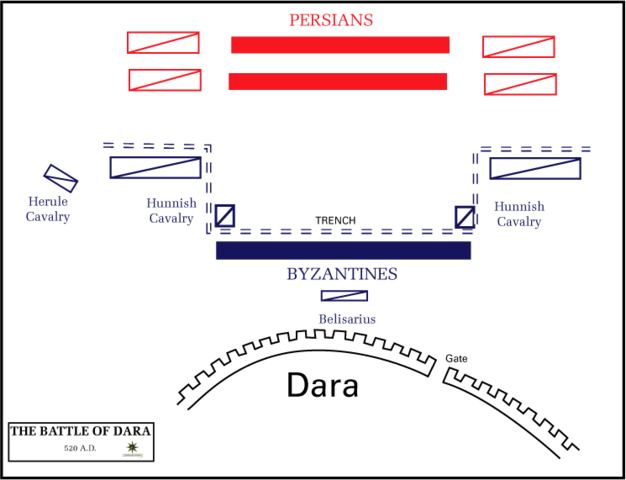
The battle for Dara in 530 started with a Persian volley of arrows, but to the surprise of both sides, the archers of Firuz ran out of ammunition very quickly. The Persian army had no choice but to advance in melee combat, launching an attack in the midst of the Roman army. The left Roman wing was almost defeated when the Massagetian cavalry charged the attackers and pushed them back. The right Roman wing, which was under attack by a deployment of Immortals led by Firuz, was routed and the Persian were now close to winning the battle.
That was, until the Massagetian cavalry once again saved the day for the Roman force. The Immortals were in disarray, their division broken. Confused and unable to regroup the Persian army was quickly defeated, suffering heavy losses before fleeing. Belisarius, content with the outcome of the battle, allowed them to leave without pursuit.
In the lands of Armenia, the Roman invasion was again a successful campaign. The Roman forces defeated the Persian army in two subsequent battles, one of which known as the Battle of Satala.
In 531 AD, the Persians, under general Azarethes, made an attempt to invade Syrian lands. They moved in alliance with the fearsome Mudhir of Hira, who in 529 ravaged the Syrian region. As soon as Belisarius became aware of the Persian campaign in Syria, he marched his men out to stop them before they manage to reach Antioch.
The Persians, becoming aware of the army waiting for them, retreated. However, the men of the roman general, a force mainly comprised of Isaurians, Lycaonians, and Arabs, chased after the withdrawing Persian army. Near Callinicum on the 19th of April 531, the two armies clashed.
Although the Romans lost the battle after the Lycaonians and Isaurians fled the field, the losses of the Persians were heavy. With this in mind, Kavadh I relieved Azarethes of his duty.
Battle of Callinicum
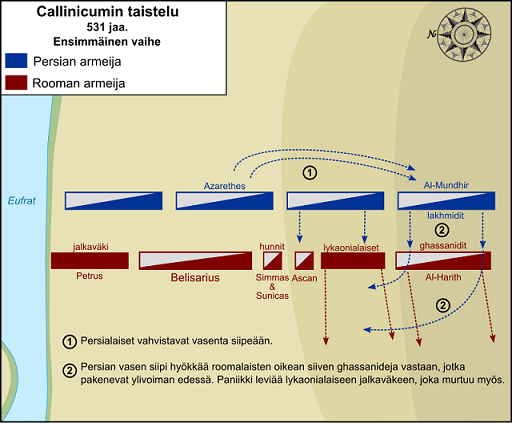
Belisarius made his deployment in three divisions, putting his cavalry of cataphracts in the middle with two infantry wings. Azarethes chose to deploy his men in four corps, the left-most wing under Mudhir.
He may have actually divided his army in a way correspondent to Belisarius’s deployment. The battle continued for an entire day, most of the time with a stalemate, until an unexpected turn of events.
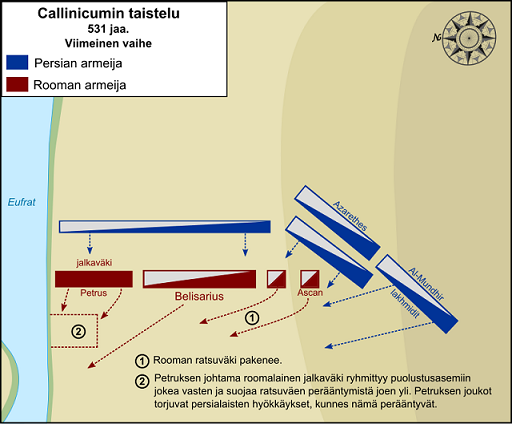
The Persian Asvārān cavalry had engaged the light infantry of the Romans for most of the day and was gaining an upper hand. However, Azarethes decided to speed up their victory. He and Mudhir moved to outflank the Lycaonians and Isaurians, launching an attack with their cavalry units and gaining the higher ground.
The remaining Roman troops, facing imminent death, fled the battle and left the right wing of Belisaurius open to the entire Persian force. The Roman general, with skillful tactics and decisions, changed his position and took a defensive stance with the Euphrates behind his back. When the evening came, the Persians pull away. Belisarius made the most of the opportunity and transported his army on the other bank, putting an end to the battle.
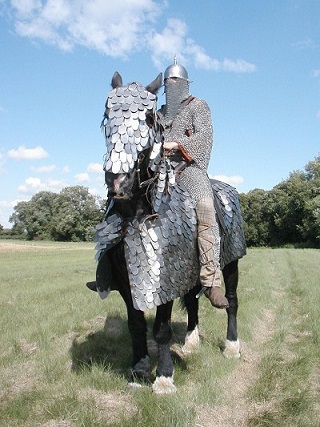
This was the last battle of the Iberian war, though this was not a result of the Persian victory. Soon after the battle, in September 531, Kavadh I died and following his death a peace treaty was signed. This treaty cost Justinian 11,000 pounds of gold, which he had to pay to Kavadh I’s son and new Persian Emperor, Khosrow I. The signing of the peace treaty was welcomed by the Roman Emperor, for he had lost too many men in the war with the Persians.
The Eternal Peace, as it was known, only lasted till 540.
